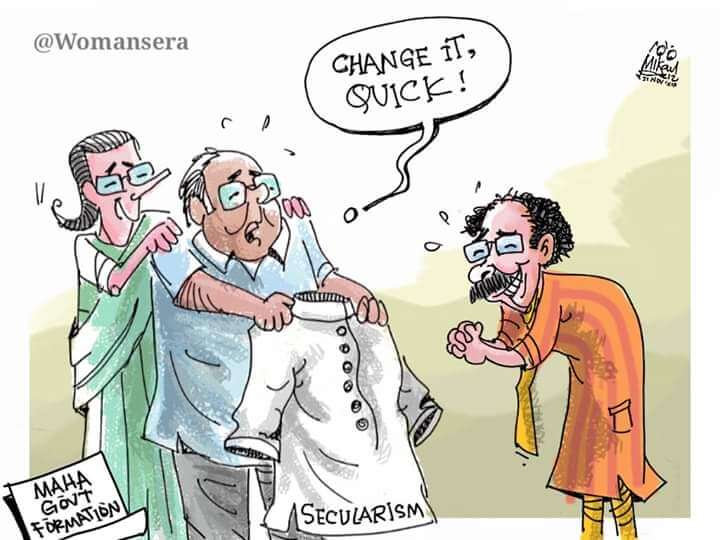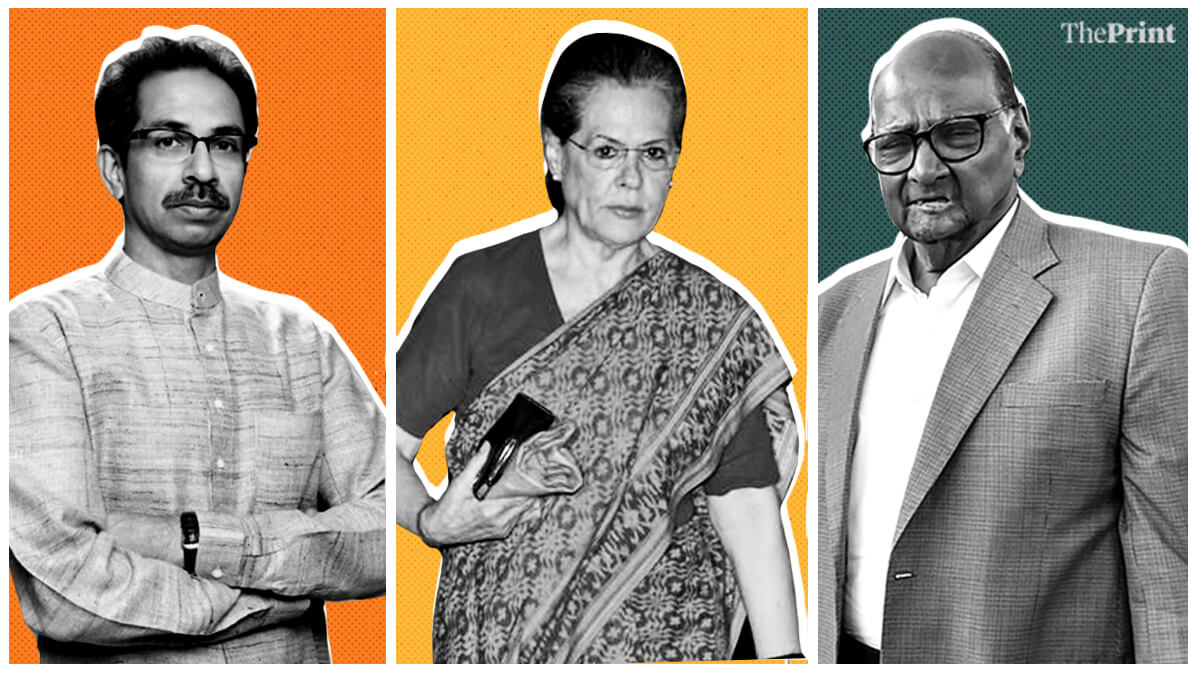Last week, in what appeared to be a severe blow to the BJP, the Congress party formed a three-party coalition with Sharad Pawar's NCP and long-time BJP ally Shiv Sena, seemingly ignoring apprehensions of allying with a communal party and seemingly unfurling a new chapter in Maharashtrian and Indian politics.
Overnight, this never-ending drama took a new twist with a midnight coup now delivering the possibility of a BJP and NCP coalition Maharashtra government instead. However, the shapeshifting nature of this election merely serves to illustrate the Machiavellian principles guiding Indian politics where the political hues of left, right, and centre are blurred as per each party's convenience.
Contrary to popular belief, the relationship between Congress and Shiv Sena dates back to the 1960s, in sharp contrast to Congress' outwardly secular stance.
In the 60s Bombay was characterized by the militant trade union movements and conflict between the Communist Party of India (CPI) and the Indian National Congress (INC) party. Allying with the business elites of the city, the INC helped form the Shiv Sena in 1966, who, as Sujata Anandan writes, weakened labour unions, and proved to be "a handy tool in destroying the communist parties which, in some ways, ruled Bombay without quite being in power, much like the Shiv Sena did in later years.”
The CPI failed to find a balance between internationalism and regionalism. This power vacuum was seized by Shiv Sena, who built the party with the help of organisations like Ooth ani Ekjut Ho or Rise and Unite, formed by Padmakar Adhikari, Shyam Deshmukh and Vasant Pradhan, in the mid-60s to stoke the fires of Maharashtrian identity politics and counter Communist-led trade unions.
With Congress by its side, Shiv Sena workers attacked trade union leaders and offices in several areas of Bombay.
The first seeds of this alliance were planted in 1967, when Congress defeated CPI-backed former Union defence minister VK Krishna Menon with Shiv Sena's support in the Bombay North-East Mumbai constituency.
In 1968, the then home minister of Maharashtra, INC's Balasaheb Desai allied with Shiv Sena's Balasaheb Thackrey–sharing a common ideology of 'sons of the soil'–and facilitated Shiv Sena’s stunning performance in the Bombay Municipal Corporation, where it won 40 out of 140 seats.
The wheels of this alliance were firmly set in motion by 1969, when the then chief minister Vasantrao Naik remained silent even as Shiv Sena blocked the entry of Morarji Desai, a former chief minister of the undivided Bombay state, into the city.

Vasant Rao Naik is arguably complicit in the creation of the ‘Hindu Hriday Samrat’, as he encouraged the Shiv Sena to form its own union, the Kamgar Sena, in order to counter the trade union movement in Maharashtra. Kamgar Sena went on to hack the incumbent MLA and trade union leader Krishna Desai to death in October 1970. Although sixteen members of the Shiv Sena were later sentenced, Thackrey openly boasted about the murder of Desai and pledged to ‘massacre communists everywhere’. In fact, in the bye-election, Shiv Sena made its maiden entry into Maharashtra’s legislative politics by wresting the seat from CPI with the help of Congress.
The alliance between the two parties solidified while other non-Congress parties found it difficult to survive in a Congress-dominated system. In the 1971 Lok Sabha elections, the two formed an allied government.
Thus, the shock at INC's alliance with Shiv Sena after the most recent Maharashtra election is surprising given Congress' heavy involvement in Shiv Sena's formation and growth.
It was only in the late 1980s, after the Babri masjid fiasco and subsequent rise of the right-wing and Hindu-nationalist BJP that Shiv Sena became a close ally of the fraternal Hindutva family, illustrating the Machiavellian elements in Indian politics where alliances are forgotten and forged with equally reckless abandon.
In Machiavelli's 'The Prince', the king is advised that in a zero-sum world, his political ethos should be guided by prudence and opportunism, rather than any deep-seated beliefs or ethics. Similarly, Congress formed a partnership of convenience with Shiv Sena in order to undermine labour-union movements and Communist elements in Maharashtra, and facilitate economic plunder by corrupt businessmen. In return for its support, Shiv Sena was allowed to thrive as a rogue element of Indian politics and has been excused for its open and unabashed creation of impudent lawlessness.
The 'practical' approach of Machiavellian principles bring inherent risks, as in the example of Congress, where allying with fringe groups like the Shiv Sena undermined the legitimacy of its leadership. In 1992, the Congress government was maligned for its complicity in the 1992-93 Mumbai riots following the demolition of Babri Masjid, as evinced by the Srikrishna Commission report, which says, incidents of violence, looting and arson which went on unchecked".
Hence, Congress' alliance with the Shiv Sena in the most recent election highlights the Machiavellian and duplicitous nature of Indian political parties, where allies and ideologies are in constant flux. Maharashtrian politics has thus come full circle since the 60s. The only question now is when this cycle will end and the next one will begin.

